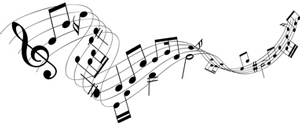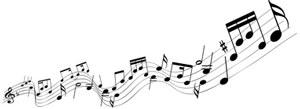How to Sing with Babies – The Hanen Way!

Music offers a special way to interact with your baby, as children often communicate and connect during music long before they can say any words.
The best way to sing with your baby is to sing 'The Hanen Way'. Singing the 'The Hanen Way' means:
- Turning a song into a little “conversation” between you and your baby by creating opportunities for your baby to participate during the song
- Using the natural repetition of words and actions in songs to let your baby hear the same word over and over, and to help him learn what actions are coming next
- Singing the same song many times over days and weeks
Singing 'The Hanen Way' encourages your baby’s social, cognitive, and communication development while the two of you connect and have fun together!
Tips for singing with your baby the 'The Hanen Way'
When to Sing
- When your baby is calm and alert - When your baby is awake, look for moments when she is calm and alert. She will have an easier time focussing on you at these moments, and will look at you with great interest if you sing 'The Hanen Way'!
- During daily routines – Sing while changing your baby’s diaper, dressing or feeding her or going for a walk in the stroller. As daily routines happen regularly, they provide many opportunities for your baby to hear the same song over and over again. This repetition helps your baby learn the song so she can anticipate the words and actions and participate with gestures and sounds.
Note: When singing with your baby, watch for signs that your baby has had enough or is getting tired. If your baby starts to fuss, turns her head away, or doesn’t look at you, it may not be the best time to sing. Try again another time, or perhaps try a soothing lullaby that will calm your baby and lull her to sleep.
How to Sing
It doesn’t matter what you sing or whether or not you can even carry a tune. Your baby will enjoy this time of connection with you!
Here are some simple tips to help make singing an enjoyable learning experience for your baby that will promote her communication and social skills:
- Be face to face - this allows your baby to make eye contact with you and watch your face, and learn from your facial expression, actions, and words.
- Sing slowly - this helps your baby hear the words and see the actions.
- Think about how your baby can participate - once a song is familiar, your baby will be able to participate in some way, depending on her age and stage of development:
A very young baby (under 6 months) might become quiet when you sing, increase her activity (eg. kick her feet), turn her head towards you when you sing, look at you, smile at you, and even start to coo or make noises when you sing. Babies start to imitate facial expressions at a young age, so you might find your young baby watching you and trying to copy your facial expression as you sing!
Older babies (between 6-12 months) can grasp objects and may enjoy holding and shaking a rattle or, later on, banging on a drum. Older babies also enjoy making sounds back and forth with their caregivers, so your baby may try to “sing” along with you! Older babies may also try to imitate your facial expression, actions and sounds, or move their bodies to the rhythm. Around 8-9 months of age, babies start to clap their hands, and may enjoy doing this while you sing.
- Pause and wait - Once you know how your baby might participate during a familiar song, you can help her to do so by pausing and waiting during key moments in the song. A good place to pause and wait is at the end of a line of music. You can pause before you say the last word and see if your baby reacts. For example, when singing “The Eensy Weensy Spider”, you might pause before saying “out” (“Down came the rain and washed the spider... (WAIT) out”). If you wait and look expectantly at your baby, she may look at you and smile or move, or an older baby may try to make a sound or do an action. Remember to give your baby a long time to react and respond – at least 10 seconds. If you’ve waited a long time and your baby doesn’t react, fill in the word/action yourself, with emphasis. Perhaps your baby isn’t ready to participate yet, or it could be that the song isn’t familiar enough yet to your baby.
- Help your baby copy your actions – Older babies (between 9-12 months) who have started to imitate actions may respond well when you take their hands and help them to copy your simple actions during the song. For example, your baby may allow you to take her hands to help her clap during the song once you have demonstrated this yourself. However, if your baby doesn’t like that, don’t continue. The main point of singing with your baby is to create a fun experience so she will want to interact with you and have fun.
- Repeat the song – If your baby likes it, sing the song over and over again. This repetition helps babies become familiar with the words, sounds, and actions, and anticipate what comes next during the song.
- Watch carefully for any attempt to communicate - babies’ attempts at communication can be very subtle and easy to miss. Be sure to watch your baby’s facial expression, eye gaze, movements, and sounds when you sing. Your baby may be trying to participate in her own way. Interpret anything your baby does during the song as communicative. For example, if your baby turns away, this may mean she doesn’t want to sing anymore. Or if she says “ahhh” when you pause at a key moment in the song, this may be her attempt to sing along. Watch for these subtle messages and treat them as if they are meaningful, even if you are not sure if they are. In this way, you will reinforce your baby’s subtle attempts at communication and encourage her to do more.
Recipe for a song
There are a few ways to enjoy music with your baby. One way is to sing well-known children’s songs, like “Twinkle Twinkle Little Star” or “The Eensy Weensy Spider”. But another way to share music is to make up a song especially for your baby. You can follow the guidelines below to create a song for your baby:
- Choose a simple, familiar tune or make up your own melody.
- Make up a song about things that are familiar to your baby. You can use your baby’s name in the song and names of other important people in your baby’s life. Or sing about things that happen during your baby’s day.
- Choose meaningful, useful words. Some traditional children’s songs have complicated vocabulary, such as “Mulberry bush”, “water spout”, or “London bridge”, which are hard for babies to understand. The advantage of making up your own song for your baby is that you can choose simple, familiar words that relate to your baby and her daily routines.
- Put important words at the end of the lines in the song – this will make these words stand out.
- Keep it simple! Babies love repetition and learn from it. So repeat key lyrics and keep the number of words to a minimum.
- Add simple actions or movements to the song.
- You may want to add sound effects or “fun words” to the song, if appropriate. These sounds and words will catch your baby’s attention. Examples include: animal sounds such as “quack quack” or “moo”, vehicle sounds such as “vrooooomm” or “beep beep”, other sounds and fun words such as “achoooo!”, “wheee!”, “boo!”
- Between 8-10 months, babies begin to recognize their own name. Try incorporating your baby’s name into the song – it will catch her attention.
Here’s a song to the tune of “This is the way we....” (also known as “Here we Go 'Round the Mulberry Bush”) that you can sing every time you change your baby’s diaper. Notice that the words are very repetitive. The words “diaper” and “clean” stand out because they are at the end of the line of music:

This is the way we change your diaper
Change your diaper, Change your diaper
This is the way we change your diaper
Now you’re nice and clean!
Here’s a song to the tune of Frère Jacque that you can sing when your child is doing something like laughing, jumping, splashing, etc.

Jesse is laughing
Jesse is laughing
Ha ha ha
Jesse is laughing
Jesse is laughing
Ha ha ha, Ha ha ah.
If you follow the guidelines above, you will probably notice that your baby:
- Enjoys it when you sing to her, and probably pays attention to you for a longer period of time than usual
- Watches your face closely and smiles when you sing
- Reacts and participates during the song in her own way, through facial expression, movement, actions, and/or sounds.
This approach to singing with your baby is based on the principles from Takes Two to Talk® (Pepper and Weitzman, 2004), a practical guidebook for parents who are concerned about their child’s language development.
Click on the links below to find out more about how Hanen can help you help children communicate:
Similar articles by tag:
